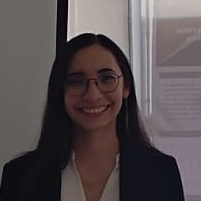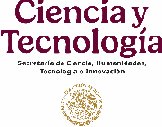Segunda generación: 2022 - 2024

Julio De La Torre Vanegas
Aprendizaje Profundo por Refuerzo para Robots Colaborativos y/o Competitivos
La presente tesis aborda la implementación de algoritmos de aprendizaje por refuerzo multiagente en entornos cooperativos y/o competitivos. La investigación parte de los fundamentos del aprendizaje por refuerzo, analizando algoritmos como iteración por valor hasta algoritmos Actor-Crítico que son el estado del arte en este campo. Para llevar a cabo la implementación de estos algoritmos, se desarrollan simuladores especializados que reflejan fielmente los desafíos y características de los entornos reales seleccionados. La metodología para llevar a cabo el entrenamiento de los agentes incorpora técnicas innovadoras como el aprendizaje curricular y la búsqueda óptima de hiperparámetros con el objetivo de mejorar la eficiencia y convergencia del proceso de aprendizaje. En entornos realistas se realiza una selección de características usando técnicas de visión por computadora y algoritmos de seguimiento de objetos multiagente. Se realiza una comparativa de los algoritmos de aprendizaje por refuerzo con métodos tradicionales de control y se observa que los resultados obtenidos son superiores en términos de eficiencia. Las contribuciones que se realizan en esta tesis son significativas en el ámbito de la aplicación de algoritmos de aprendizaje por refuerzo multiagente en entornos desafiantes. La metodología propuesta sienta las bases para futuras investigaciones y aplicaciones en el campo de la robótica cooperativa y competitiva.
Primera generación: 2021 - 2023

Mónica Anahí Rodríguez Ortiz
Chain Flocking: Multi-Agent Navigation in Unknown Environments with Local Measurements
Recently, Multi-Agent Systems (MAS) have gained significant importance in various robotics applications due to their ability to cooperate and distribute tasks efficiently. This research presents a novel approach to navigating a MAS in unknown environments without the use of a global positioning system, a common scenario in many missions. Effective navigation is essential as it forms the foundation for executing any subsequent tasks.
The proposed solution is based on a flocking scheme, eliminating the need for predefined formation geometry and enabling the formation scalability and adaptability. In this approach, agents perceive relative information about other agents and obstacles to maintain the formation and avoid collisions. Additionally, agents can perceive relative information about the goal location and navigate the environment, either by using local motion planning techniques or by following each other to maintain the formation, resulting in the creation of a chain structure within the overall flocking formation.
This behaviour, referred to as Chain Flocking, is a multi-leader-follower formation scheme where each agent can lead another agent while following the primary formation leader to navigate the environment. To achieve a fully distributed formation without predefined leader, a distributed method is proposed where a cost function is used to select the overall formation leader, who utilizes local motion planning for navigation. This leader can change based on the formation’s needs, depending on the agent’s location, goal information and environment characteristics. By having agents follow one another, the formation topology is modified to increase the agent’s perception range without compromising the integrity of the flocking formation geometry.
The effectiveness of the method is demonstrated through multiple simulations using a dynamic simulator and differential-drive robots as agents. In the experiments, multiple robots with the Chain Flocking algorithm implemented are placed in different environments and successfully navigate from one origin location to another using relative sensing information about other agents, obstacles and the goal.
Angelo David Espinoza Valarezo
Planificación de Movimiento con Retroalimentación Sensorial
En esta tesis se propone un método que integra en el planificador local retroalimentación sensorial, más en especifico se propone extender los mapas de caminos probabilísticos (PRMs por sus siglas en Inglés) incluyendo control visual basado en imagen (IBVS por sus siglas en Inglés) en el planificador local. El objetivo es complementar las fortalezas de ambas técnicas, obteniendo un método que por construcción es capaz de considerar obstáculos y ser ejecutable a lazo cerrado con control visual. A diferencia de trabajos previos, el planificador propuesto en esta tesis es multiconsulta y se puede usar para moverse de diversos estados iniciales a diversas estados finales. Se proponen diversas variantes del algoritmo, algunas son capaces de permutar entre varios blancos visuales, y así generar una trayectoria más larga y compleja. Los diferentes algoritmos son validados intensivamente con diversas simulaciones computacionales.
